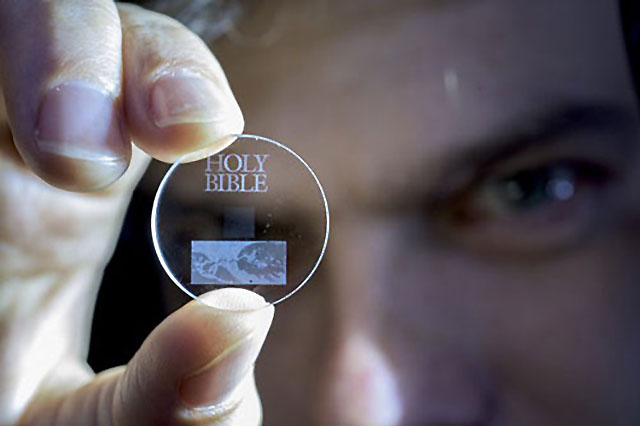![]()
If you use a hard disk drive for storage, then you’re probably aware of the shortcomings of spinning disk drives. Traditional disk drives carry the risk of writing and copying information incorrectly, as well as losing information over time. But scientists at the University of Southampton have made a major step forward in the development of advanced digital data storage that could make traditional hard disk drives a thing of the past.
The scientists have developed a process for recording and retrieving information via glass discs, five-dimensional digital data and laser writing. In addition to being able to store unprecedented amounts of data, up to 360TB per disc, that data is able to survive within the glass discs for billions of years. This introduces a new era of data archiving which could be very useful for organizations with massive archives such as museums, libraries and national archives.
![]()
The technology was first demonstrated in 2013 when a 300 kb digital copy of a text file was successfully recorded in 5D. But what exactly is 5D, and why is it so much “better” than previous writing formats? 5D represents five dimensions of readability, so now in addition to the three dimensions of position, the actual size and orientation of data has an impact on how it is encoded.
Professor Peter Kazansky of Southampton University’s Optoelectronics Research Centre said “it is thrilling to think that we have created the technology to preserve document and information and store it in space for future generations. This technology can secure the last evidence of our civilization: all we’ve learnt will not be forgotten.”
Short video of what it looks like to print data onto the disc:
View the original article, HERE.
